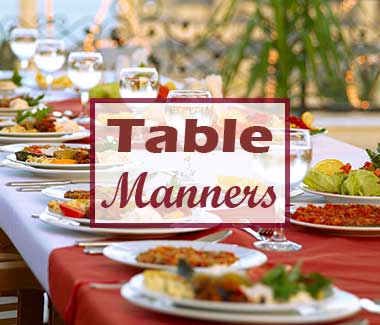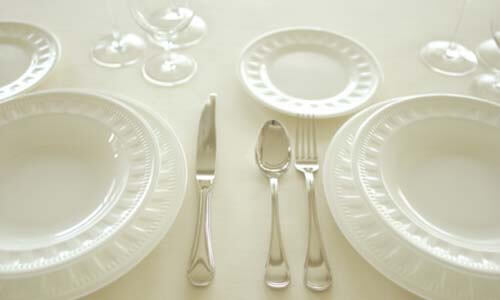Guest Etiquette
when to arrive
If a specific time is given, arrive at the time stated, or shortly thereafter, never early.
general guidelines
- if it is muddy or wet outside, wipe your feet on the doormat.
- don't put your feet up on the furniture.
- use a coaster. ask for one if none is present.
- don't snoop around without being invited.
- when dinner is announced, wait until the hostess moves toward the door, then rise.
- if you damage something, apologize and arrange to replace the item or to pay for repairs.
- don't visit if you are sick
leaving
Dinner guests should stay at least one hour after dinner.
staying too long
Stay as long as you like, but look for clues that the host is tired.
- the host announces a last call for a drink, and closes the bar.
- the host starts cleaning up.
party wear
The rule of thumb in party wear? When in doubt, it is better to dress down (slightly) than up. Or, better yet, do some checking. Ask your hosts, or another guest, to clarify the type of clothing and degree of formality for the upcoming occasion. Dress-code suggestions do get confusing. Some of the descriptions are vague, and regions of the country have variations in customs. It's usually traditional, for example, to remove your gloves whenever you are introduced to someone indoors. When introduced to someone outdoors on a cold Minnesota day, however, you do the practical commonsense thing: Keep those gloves on.
what to wear
People are often confused as to what it means when an invitation specifies a certain type of dress, from "dressy casual" and "business casual" to "white tie," "black tie," "formal," "semiformal," and "informal.”
informal or casual. Informal or casual means just that: something informal and comfortable but neat, pressed, and clean. Your attire should fit the custom of the area and occasion; for a poolside party, jeans and a T-shirt, plus your bathing suit, would usually be fine. The terms "dressy casual" and "business casual" -while confusing- are becoming more prevalent. "Dressy casual" may seem a bit of a contradiction in terms; however, in these relaxed times, it may keep people from showing up in a T-shirt and torn cutoffs. For a "dressy casual" affair, wear something nicer than ordinary everyday casual clothes but not as fancy as cocktail wear. "Business casual" usually means wearing something a little more casual than customary office attire, such as khakis, sports shirts, and blazers or sweaters.
semiformal. Semiformal generally means that women wear dresses or dressy pants ensembles. Men wear either suits and ties or sports shirts, a sports jacket, a tie, and slacks. If in doubt, it is perfectly acceptable for you to check with your hostess.
black tie or formal. Black tie or formal means men should wear tuxedos with a soft shirt and bow tie. Jackets may be white in the summer and black the rest of the year, and are available in patterns and many other colors. Women either wear long dresses, or a short, cocktail-length dress, depending upon what is currently customary in their area and for the occasion.
white tie. White tie is the most formal evening wear -white tie, wing collar, and tailcoat. This is almost never required today, except for official and diplomatic occasions and the rare private ball. For a woman, "white tie" indicates that a long gown should be worn.



